Rick Just's Blog, page 64
March 30, 2023
Statehouse Vault Doors (tap to read)
There are many beautiful doors in Idaho’s statehouse. Most are wooden, many with glass or frosted glass windows in the upper half. Two, though, are unique. To enter certain offices in the Idaho Capitol, you step through the openings of door-sized safes. The gleaming steel doors with hefty metal latches, knurled knobs, and gold-leaf lettering once protected the state’s treasury back when physical money from tax revenues was kept there before finding its way to the bank.
There is little need for enormous vaults to protect cash anymore, but when the renovated statehouse was reopened to the public in 2010 we found that those historical doors—minor treasures in themselves—had been retained.
Nowadays, I walk by those doors on my way to my Senate office every day. I'm not in the office often, because I'm usually in some committee, but stop by for a visit. You can always see the doors.
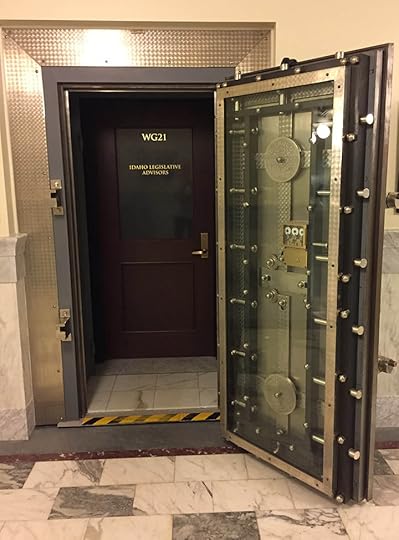
There is little need for enormous vaults to protect cash anymore, but when the renovated statehouse was reopened to the public in 2010 we found that those historical doors—minor treasures in themselves—had been retained.
Nowadays, I walk by those doors on my way to my Senate office every day. I'm not in the office often, because I'm usually in some committee, but stop by for a visit. You can always see the doors.

Published on March 30, 2023 04:00
March 29, 2023
Snowplanes (tap to read)
If the landscape is going to be covered with fluffy, white flakes for several months out of the year, you may as well make the best of it. In Idaho, that meant figuring out a way to travel across snow and ice more easily, or in a way that was more fun.
From the January 11, 1870, Idaho Tri-Weekly Statesman, “Some of the boys have constructed an iceboat which runs by means of machinery and sails. They had it up on the skating park Sunday, and the time made would astonish a locomotive. It don’t exactly fly but just scoots along fast as the wind. The machine carries four persons and ought to be very popular with the ladies. Tom Maupin has charge of the critter, and will probably turn her loose again this afternoon. “
In the Idaho Daily Statesman of December 29, 1932, there ran a story about a mail carrier in Mountain home who had ordered a “snowmobile” so he could better make the trip from there to Rocky Bar and back.
In January, 1937, The Idaho Daily Statesman had a story about a local man whose “gimmick is a propeller-powered plane fuselage mounted on three skis—two in front in the usual place for landing gear, and the third in the rear at the tail skid.” The article noted that similar devices had been used on the ice on Payette and Coeur d’Alene lakes.
An Associated Press story from Arco appeared in 1937 stating that “James Taylor of Boise is testing on the snowbanks of south central Idaho this week his newly invented 'snowmobile.' He brought the machine, a sort of automobile on skis, from Boise on a trailer and is giving it a thorough ‘workout’ in this drifted area.”
That same year, Tom McCall, of McCall, Idaho, was using a 225 horsepower propeller-driven snowmobile to sled along at 50 mph. That snowmobile was to be put in service at Sun Valley Lodge.
For a number of years reports of snowmobile use could mean tracked vehicles or those using airplane engines with propellers. In the early 1940s, newspapers began calling the propeller-driven sleds “snowplanes.”
By 1947 they were holding “national” snowplane races near Spencer, Idaho, the first of which was won by Thomas Katseanes of Hamer. The second annual national snowplane race was held at the airport in Duboise, with Gov. C. A. Robbins in attendance. Tom Katseanes repeated his win.
Snowplane races went on for a few years, dropping further and further back in newspaper pages. The last mention of snowplanes in the Idaho Statesman was in 1972, when a young man was killed near Leadore when the machine he was riding in struck a cattle guard, hurling the spinning prop into the snowplane’s cab.
By the late 60s and early 70s the much more practical tracked snowmobiles, forerunner of the popular recreation vehicles of today, were starting their rise in popularity, thanks in no small part to a friend of mine, Chuck Wells, who started the Idaho Department of Parks and Recreation’s snowmobile registration program that provides thousands of miles of groomed trails for riders each year.
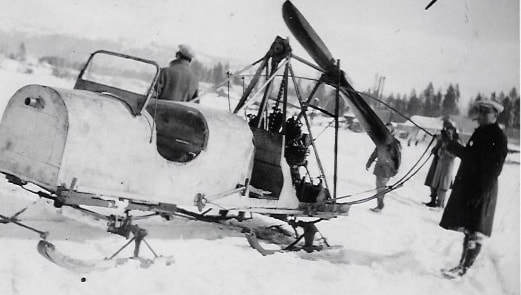
From the January 11, 1870, Idaho Tri-Weekly Statesman, “Some of the boys have constructed an iceboat which runs by means of machinery and sails. They had it up on the skating park Sunday, and the time made would astonish a locomotive. It don’t exactly fly but just scoots along fast as the wind. The machine carries four persons and ought to be very popular with the ladies. Tom Maupin has charge of the critter, and will probably turn her loose again this afternoon. “
In the Idaho Daily Statesman of December 29, 1932, there ran a story about a mail carrier in Mountain home who had ordered a “snowmobile” so he could better make the trip from there to Rocky Bar and back.
In January, 1937, The Idaho Daily Statesman had a story about a local man whose “gimmick is a propeller-powered plane fuselage mounted on three skis—two in front in the usual place for landing gear, and the third in the rear at the tail skid.” The article noted that similar devices had been used on the ice on Payette and Coeur d’Alene lakes.
An Associated Press story from Arco appeared in 1937 stating that “James Taylor of Boise is testing on the snowbanks of south central Idaho this week his newly invented 'snowmobile.' He brought the machine, a sort of automobile on skis, from Boise on a trailer and is giving it a thorough ‘workout’ in this drifted area.”
That same year, Tom McCall, of McCall, Idaho, was using a 225 horsepower propeller-driven snowmobile to sled along at 50 mph. That snowmobile was to be put in service at Sun Valley Lodge.
For a number of years reports of snowmobile use could mean tracked vehicles or those using airplane engines with propellers. In the early 1940s, newspapers began calling the propeller-driven sleds “snowplanes.”
By 1947 they were holding “national” snowplane races near Spencer, Idaho, the first of which was won by Thomas Katseanes of Hamer. The second annual national snowplane race was held at the airport in Duboise, with Gov. C. A. Robbins in attendance. Tom Katseanes repeated his win.
Snowplane races went on for a few years, dropping further and further back in newspaper pages. The last mention of snowplanes in the Idaho Statesman was in 1972, when a young man was killed near Leadore when the machine he was riding in struck a cattle guard, hurling the spinning prop into the snowplane’s cab.
By the late 60s and early 70s the much more practical tracked snowmobiles, forerunner of the popular recreation vehicles of today, were starting their rise in popularity, thanks in no small part to a friend of mine, Chuck Wells, who started the Idaho Department of Parks and Recreation’s snowmobile registration program that provides thousands of miles of groomed trails for riders each year.

Published on March 29, 2023 04:00
March 28, 2023
The Sampson Roads (tap to read)
Tourism professionals often lament that there are not better signs on our roads. Charlie Sampson thought the same thing back in 1914, and he did something about it.
Sampson ran the Sampson Music Company in Boise. One day, while making a delivery in the desert south of town, Charlie got lost. That annoyed him. He thought there should be signs along the roads so travelers could find their way. He took that suggestion to local officials. They ignored him. To their surprise, Sampson proved that he was not one to let a good idea die. He began to mark the roads around Boise himself.
Sampson carried a bucket of orange paint with him wherever he went, and painted signs on rocks, trees, barns, bridges, fences... just about anything that didn't move. The routes he marked became known locally as the Sampson Trails. Of course, many of the larger signs also included a few words about the Sampson Music Company.
Sampson became such a believer in his markers that he hired a three-man crew to keep the signs in shape. He spent thousands of dollars on the project.
In 1933 the Bureau of Highways decided to put a stop to Sampson's signing. They claimed it defaced the landscape. It probably did, but the Idaho Legislature didn't buy that argument. They passed a resolution commending Sampson for his efforts and giving him the right to continue marking the Sampson Trails.
Charlie Sampson died in 1935, leaving the task of guiding people along the roadways to others. One of those people is Cort Conley. His book, Idaho for the Curious , from which the story of Charlie Sampson was taken, is probably the best guide available for travelers interested in Idaho history.
The photo showing one of Sampson’s orange dots is from the Idaho State Historical Society digital collection.
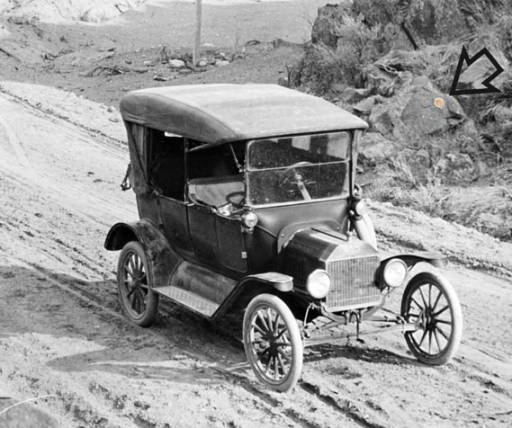
Sampson ran the Sampson Music Company in Boise. One day, while making a delivery in the desert south of town, Charlie got lost. That annoyed him. He thought there should be signs along the roads so travelers could find their way. He took that suggestion to local officials. They ignored him. To their surprise, Sampson proved that he was not one to let a good idea die. He began to mark the roads around Boise himself.
Sampson carried a bucket of orange paint with him wherever he went, and painted signs on rocks, trees, barns, bridges, fences... just about anything that didn't move. The routes he marked became known locally as the Sampson Trails. Of course, many of the larger signs also included a few words about the Sampson Music Company.
Sampson became such a believer in his markers that he hired a three-man crew to keep the signs in shape. He spent thousands of dollars on the project.
In 1933 the Bureau of Highways decided to put a stop to Sampson's signing. They claimed it defaced the landscape. It probably did, but the Idaho Legislature didn't buy that argument. They passed a resolution commending Sampson for his efforts and giving him the right to continue marking the Sampson Trails.
Charlie Sampson died in 1935, leaving the task of guiding people along the roadways to others. One of those people is Cort Conley. His book, Idaho for the Curious , from which the story of Charlie Sampson was taken, is probably the best guide available for travelers interested in Idaho history.
The photo showing one of Sampson’s orange dots is from the Idaho State Historical Society digital collection.

Published on March 28, 2023 04:00
March 27, 2023
POWS at Farragut (tap to read)
The top picture is of a group of troops at Farragut Naval Training Station getting ready to board “cattle cars” for some work assignment. Do you notice anything unusual about them?
The second photo gives you a clue. Their camp newsletter was in German. This particular issue announces the death of President Franklin Delano Roosevelt in 1945. Roosevelt had visited FNTS in 1942.
Perhaps as many as 926 POWs spent time at Farragut, clearing brush and shoveling coal mostly, but also as bakers, cooks, storekeepers, and firefighters. Long after the war, a former prisoner would occasionally show up at Farragut State Park for a visit. They generally had good memories.
The bottom photo is one of the POWs working with a horse on stable detail. His name was Werner Wagner. The horse’s name was Dime.
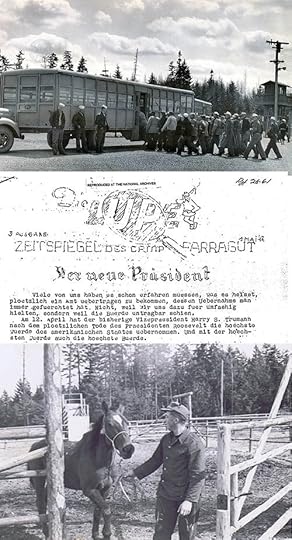
The second photo gives you a clue. Their camp newsletter was in German. This particular issue announces the death of President Franklin Delano Roosevelt in 1945. Roosevelt had visited FNTS in 1942.
Perhaps as many as 926 POWs spent time at Farragut, clearing brush and shoveling coal mostly, but also as bakers, cooks, storekeepers, and firefighters. Long after the war, a former prisoner would occasionally show up at Farragut State Park for a visit. They generally had good memories.
The bottom photo is one of the POWs working with a horse on stable detail. His name was Werner Wagner. The horse’s name was Dime.

Published on March 27, 2023 10:00
March 26, 2023
Pierce was a Jerk (tap to read)
Randy Stapilus’ book
Speaking Ill of the Dead, Jerks in Idaho History
is an interesting read. He has a chapter on Elias Davidson Pierce. Pierce’s jerkiness, in Randy’s telling, comes from his complete disregard for both advice from authorities and reservation boundaries. I recommend you read the book to find out more.
Today, I’m going to pull out just a few tidbits that I found interesting.
Pierce was the first man to name a town in Idaho—or what would be Idaho—after himself. Others with little modesty would follow. His town came along in 1860 when he set it up on the Nez Perce Reservation to service miners. The town was called… Wait, have you been paying attention at all?
So, Pierce, Idaho grew up fast. Thousands came to mine gold and by 1862 it was the county seat of Shoshone County. Not the Shoshone County we know and love today, but Shoshone County, Washington Territory. Idaho Territory was still a year away. Even so, when they built the courthouse it would, upon Idaho gaining territorial status, become the territory’s first government building. It remains the oldest government building in Idaho (photo).
Pierce glittered like gold in a pan and for about that long. By 1863 the population dropped from several thousand to about 500, because gold glittered somewhere else, drawing miners away. That’s about the population of Pierce today.
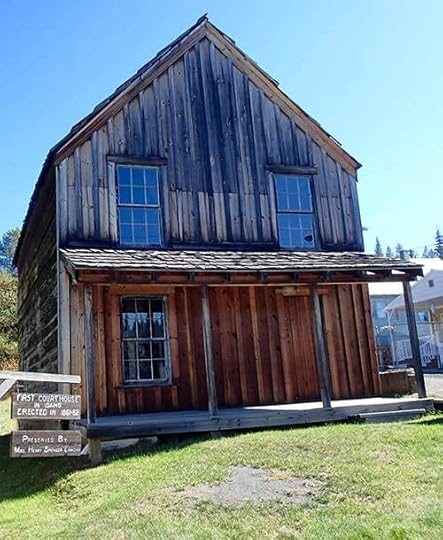
Today, I’m going to pull out just a few tidbits that I found interesting.
Pierce was the first man to name a town in Idaho—or what would be Idaho—after himself. Others with little modesty would follow. His town came along in 1860 when he set it up on the Nez Perce Reservation to service miners. The town was called… Wait, have you been paying attention at all?
So, Pierce, Idaho grew up fast. Thousands came to mine gold and by 1862 it was the county seat of Shoshone County. Not the Shoshone County we know and love today, but Shoshone County, Washington Territory. Idaho Territory was still a year away. Even so, when they built the courthouse it would, upon Idaho gaining territorial status, become the territory’s first government building. It remains the oldest government building in Idaho (photo).
Pierce glittered like gold in a pan and for about that long. By 1863 the population dropped from several thousand to about 500, because gold glittered somewhere else, drawing miners away. That’s about the population of Pierce today.

Published on March 26, 2023 04:00
March 25, 2023
Touring the Bell (tap to read)
Have you seen the Liberty Bell in Philadelphia? Or, are you waiting for it to come to you?
Getting a visit from the bell is unlikely today, but it once travelled quite a lot to fairs and patriotic assemblages. On its most recent trip from Philadelphia it made it all the way to Idaho. That was over a hundred years ago.
The Liberty Bell was the centerpiece of a bond drive to support World War I. Mounted on a railroad flatcar it toured the United States in 1915 on its way to the Panama-Pacific International exposition in San Francisco and back. By some estimates, half the people in the country turned out to see it.
The bell was on view in Boise from 7:15 to 8 am, July 13, 1915. Between 15,000 and 20,000 people came to see it. The arrival of the bell was front page news in the Meridian Times even though the bell didn’t make a stop in Meridian. It did slow down. About 8,000 people turned out in Caldwell for the 25-minute stop there, before it steamed away into Oregon for the final leg of its trip to San Francisco.
The bell was then, and remains today, a beloved US icon. Why, exactly? Partly because of its inscription, and partly because of a popular fiction that grew up around it.
The bell was cast in London in 1752, commissioned by the Pennsylvania Provincial Assembly, and inscribed with a quote from Leviticus, “Proclaim LIBERTY Throughout all the Land unto all the Inhabitants Thereof.”
The bell cracked right away when it was first rung in Philadelphia. It was twice recast to repair it.
A popular story had it that the bell rang out on July 4, 1776, announcing the Declaration of Independence. No such announcement was made that day, but historians agree it was probably one of many bells that rang in the city on July 8, when the announcement was made.
The original crack having been repaired, the bell cracked again—and remained so—sometime in the early 19th century.
As a symbol of liberty, it was a war bond star. Americans bought an average of $170 each in the Liberty Bell war bond drives.
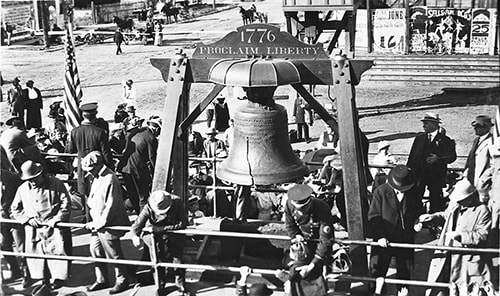 The Liberty Bell in Boise.
The Liberty Bell in Boise.
Getting a visit from the bell is unlikely today, but it once travelled quite a lot to fairs and patriotic assemblages. On its most recent trip from Philadelphia it made it all the way to Idaho. That was over a hundred years ago.
The Liberty Bell was the centerpiece of a bond drive to support World War I. Mounted on a railroad flatcar it toured the United States in 1915 on its way to the Panama-Pacific International exposition in San Francisco and back. By some estimates, half the people in the country turned out to see it.
The bell was on view in Boise from 7:15 to 8 am, July 13, 1915. Between 15,000 and 20,000 people came to see it. The arrival of the bell was front page news in the Meridian Times even though the bell didn’t make a stop in Meridian. It did slow down. About 8,000 people turned out in Caldwell for the 25-minute stop there, before it steamed away into Oregon for the final leg of its trip to San Francisco.
The bell was then, and remains today, a beloved US icon. Why, exactly? Partly because of its inscription, and partly because of a popular fiction that grew up around it.
The bell was cast in London in 1752, commissioned by the Pennsylvania Provincial Assembly, and inscribed with a quote from Leviticus, “Proclaim LIBERTY Throughout all the Land unto all the Inhabitants Thereof.”
The bell cracked right away when it was first rung in Philadelphia. It was twice recast to repair it.
A popular story had it that the bell rang out on July 4, 1776, announcing the Declaration of Independence. No such announcement was made that day, but historians agree it was probably one of many bells that rang in the city on July 8, when the announcement was made.
The original crack having been repaired, the bell cracked again—and remained so—sometime in the early 19th century.
As a symbol of liberty, it was a war bond star. Americans bought an average of $170 each in the Liberty Bell war bond drives.
 The Liberty Bell in Boise.
The Liberty Bell in Boise.
Published on March 25, 2023 04:00
March 24, 2023
Farragut Stamps (tap to read)
In the words of then governor Robert E. Smylie in announcing the selection of Farragut State Park for the event, the 1967 World Boy Scout Jamboree was “the biggest planned event in Idaho’s history.” More than 12,000 scouts attended. One of many efforts to recognize the Jamboree was the issuance of stamps in several countries, shown in the photo.
Big as the World Jamboree was, the National Boy Scout Jamboree, held two years later at Farragut, drew about 35,000.
The Farragut Jamboree was the first World Jamboree held in the United States. The second was held at Glen Jean, West Virginia in 2019.
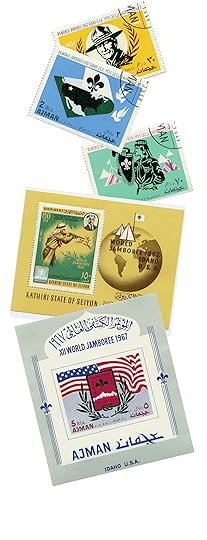
Big as the World Jamboree was, the National Boy Scout Jamboree, held two years later at Farragut, drew about 35,000.
The Farragut Jamboree was the first World Jamboree held in the United States. The second was held at Glen Jean, West Virginia in 2019.

Published on March 24, 2023 04:00
March 23, 2023
The Idaho Stop (tap to read)
Today’s post is another in our occasional Then and Now series.
Bicycles have been in Idaho since territorial days. Unlike horse drawn conveyances, bikes were not replaced by automobiles.
In May, 1911, the Boise Evening Capital News was effusive about the future of the bicycle. “No question about it—the bicycle is coming into its own again. Its fine record in the war, its many-sided utility in modern business, its wonderful influence for health, coupled with its undoubted economy and convenience—all have combined to make it even more desirable than before.”
A.P. Tyler, the local Firestone dealer, was enthusiastic about bicycles and the “Non-Skid” tires Firestone was selling. “I look for a big year for the bicycle trade generally. (Bicycles) meet a distinct need in our modern life—as the only really practical self-propelled vehicle.”
Fast forward to 1982, when Idaho showed its love for bicycles in a unique way. The Legislature that year was revising traffic rules and decided to stop cluttering up judicial calendars with “technical violations” of traffic control devices, i.e., stop signs. That was the invention of a law that has become known as the Idaho Stop. Bike riders in Idaho can treat a stop sign the same way drivers treat a yield sign. That is if the coast is clear, they can roll right through it. A later revision to Idaho code made it legal for bike riders to treat a stop light the same way vehicle drivers treat a stop sign: Stop, check to see if the way is clear, then proceed.
Idaho led the way. Several towns and states have tried passing such a law over the years. Some succeeded, and some failed. In 2017, 35 years after Idaho, Delaware became the second U.S. state to pass an Idaho Stop law. Arkansas passed an “Idaho stop” law in 2019. In 2022, Colorado passed a law legalizing the practice statewide. Oregon, Washington, Utah, North Dakota, Oklahoma, and Washington, DC have now passed similar laws.
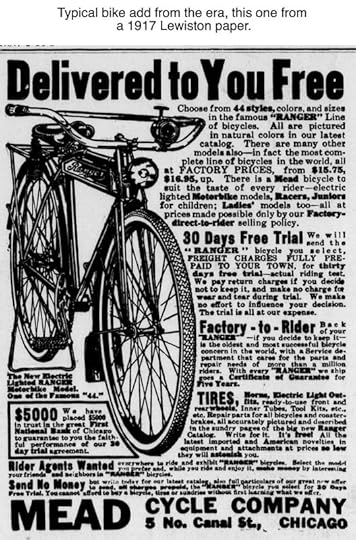
Bicycles have been in Idaho since territorial days. Unlike horse drawn conveyances, bikes were not replaced by automobiles.
In May, 1911, the Boise Evening Capital News was effusive about the future of the bicycle. “No question about it—the bicycle is coming into its own again. Its fine record in the war, its many-sided utility in modern business, its wonderful influence for health, coupled with its undoubted economy and convenience—all have combined to make it even more desirable than before.”
A.P. Tyler, the local Firestone dealer, was enthusiastic about bicycles and the “Non-Skid” tires Firestone was selling. “I look for a big year for the bicycle trade generally. (Bicycles) meet a distinct need in our modern life—as the only really practical self-propelled vehicle.”
Fast forward to 1982, when Idaho showed its love for bicycles in a unique way. The Legislature that year was revising traffic rules and decided to stop cluttering up judicial calendars with “technical violations” of traffic control devices, i.e., stop signs. That was the invention of a law that has become known as the Idaho Stop. Bike riders in Idaho can treat a stop sign the same way drivers treat a yield sign. That is if the coast is clear, they can roll right through it. A later revision to Idaho code made it legal for bike riders to treat a stop light the same way vehicle drivers treat a stop sign: Stop, check to see if the way is clear, then proceed.
Idaho led the way. Several towns and states have tried passing such a law over the years. Some succeeded, and some failed. In 2017, 35 years after Idaho, Delaware became the second U.S. state to pass an Idaho Stop law. Arkansas passed an “Idaho stop” law in 2019. In 2022, Colorado passed a law legalizing the practice statewide. Oregon, Washington, Utah, North Dakota, Oklahoma, and Washington, DC have now passed similar laws.

Published on March 23, 2023 04:00
March 22, 2023
Taxing Dogs (tap to read)
So, I was doing a little research on dog taxes in Idaho because… well, who wouldn’t? Plus, I was intrigued by the photo below of an 1867 receipt for a dog tax in Boise.
I found that the Boise tax raised $200 in 1869 when it was $5 per canine. But I also stumbled across this snarky little piece from the Caldwell Tribune of June 24, 1893, and decided to share it.
“It has accidentally leaked out that the city council recently passed a number of ordinances relating to matters of considerable interest to the taxpayers of Caldwell, among other things, an important franchise has been granted, a dog tax has been levied and the salaries of officers have been fixed. It is regrettable that those matters should obtain publicity without the sanction of the council, and it is hoped that greater discretion will be exercised in the future. Every precaution should be used in preventing subjects of general concern from reaching the public ear. Many ill-advised city councils have, adapted the rule of officially publishing their ordinances, but the plan has not been found to work satisfactorily. It often engenders a spirit of criticism and opposition, extremely aggravating to the council and promotive of public discord. The proper time
for people to become apprised of such transactions is after all possibility of protest has expired.”
A bit of satire about local government is always welcome, is it not?
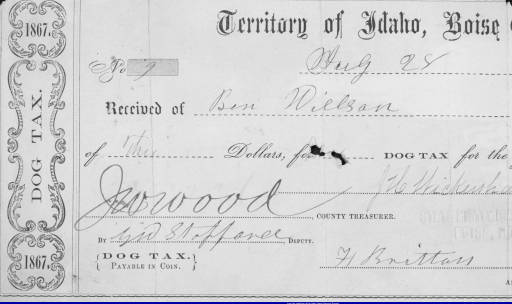
I found that the Boise tax raised $200 in 1869 when it was $5 per canine. But I also stumbled across this snarky little piece from the Caldwell Tribune of June 24, 1893, and decided to share it.
“It has accidentally leaked out that the city council recently passed a number of ordinances relating to matters of considerable interest to the taxpayers of Caldwell, among other things, an important franchise has been granted, a dog tax has been levied and the salaries of officers have been fixed. It is regrettable that those matters should obtain publicity without the sanction of the council, and it is hoped that greater discretion will be exercised in the future. Every precaution should be used in preventing subjects of general concern from reaching the public ear. Many ill-advised city councils have, adapted the rule of officially publishing their ordinances, but the plan has not been found to work satisfactorily. It often engenders a spirit of criticism and opposition, extremely aggravating to the council and promotive of public discord. The proper time
for people to become apprised of such transactions is after all possibility of protest has expired.”
A bit of satire about local government is always welcome, is it not?

Published on March 22, 2023 04:00
March 21, 2023
The Darkroom Cedar (tap to read)
Cedar trees have a smell that most people find pleasant. The natural oils of the tree are responsible for the scent, but their purpose isn’t so you can put your wedding dress in a cedar chest. Well, not exactly. The oils make the wood toxic to insects and fungus to protect the tree, which also helps protect your wedding dress.
Have you ever noticed that many old-growth cedars are hollow? That’s because younger trees may not have developed the self-protecting oil yet, so the heartwood rotted. As the tree develops, it develops the oils it needs to stave off bugs and fungus, making for a strong shell but a hollow core. That’s great news for critters of various kinds that like to nest or hide inside.
It was also great news for photographers in at least one instance. Charlie Poxleitner taught Civilian Conservation Corps students photography. This is a picture of their darkroom near Avery. The darkroom was inside the hollow of a cedar tree. The picture is probably from the mid-1930s and is part of the Idaho State Historical Society Digital Collection.
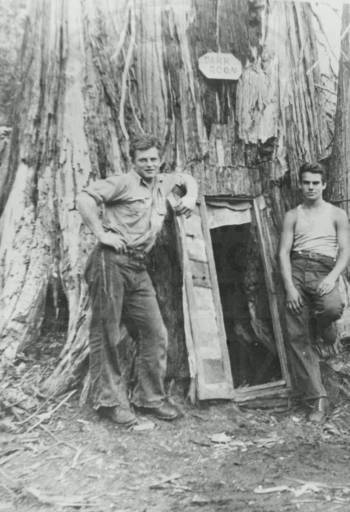
Have you ever noticed that many old-growth cedars are hollow? That’s because younger trees may not have developed the self-protecting oil yet, so the heartwood rotted. As the tree develops, it develops the oils it needs to stave off bugs and fungus, making for a strong shell but a hollow core. That’s great news for critters of various kinds that like to nest or hide inside.
It was also great news for photographers in at least one instance. Charlie Poxleitner taught Civilian Conservation Corps students photography. This is a picture of their darkroom near Avery. The darkroom was inside the hollow of a cedar tree. The picture is probably from the mid-1930s and is part of the Idaho State Historical Society Digital Collection.

Published on March 21, 2023 04:00



